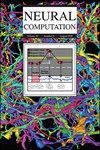Spiking Neuron-Astrocyte Networks for Image Recognition
IF 2.1
4区 计算机科学
Q3 COMPUTER SCIENCE, ARTIFICIAL INTELLIGENCE
引用次数: 0
Abstract
From biological and artificial network perspectives, researchers have started acknowledging astrocytes as computational units mediating neural processes. Here, we propose a novel biologically inspired neuron-astrocyte network model for image recognition, one of the first attempts at implementing astrocytes in spiking neuron networks (SNNs) using a standard data set. The architecture for image recognition has three primary units: the preprocessing unit for converting the image pixels into spiking patterns, the neuron-astrocyte network forming bipartite (neural connections) and tripartite synapses (neural and astrocytic connections), and the classifier unit. In the astrocyte-mediated SNNs, an astrocyte integrates neural signals following the simplified Postnov model. It then modulates the integrate-and-fire (IF) neurons via gliotransmission, thereby strengthening the synaptic connections of the neurons within the astrocytic territory. We develop an architecture derived from a baseline SNN model for unsupervised digit classification. The spiking neuron-astrocyte networks (SNANs) display better network performance with an optimal variance-bias trade-off than SNN alone. We demonstrate that astrocytes promote faster learning, support memory formation and recognition, and provide a simplified network architecture. Our proposed SNAN can serve as a benchmark for future researchers on astrocyte implementation in artificial networks, particularly in neuromorphic systems, for its simplified design.脉冲神经元-星形胶质细胞网络用于图像识别。
从生物学和人工网络的角度来看,研究人员已经开始承认星形胶质细胞是调节神经过程的计算单位。在这里,我们提出了一种新的受生物学启发的神经元-星形胶质细胞网络模型用于图像识别,这是使用标准数据集在峰值神经元网络(snn)中实现星形胶质细胞的首次尝试之一。图像识别的架构有三个主要单元:将图像像素转换为峰值模式的预处理单元,形成二部(神经连接)和三部突触(神经和星形细胞连接)的神经元-星形胶质细胞网络,以及分类器单元。在星形胶质细胞介导的snn中,星形胶质细胞按照简化的Postnov模型整合神经信号。然后,它通过胶质传递调节整合-激活(IF)神经元,从而加强星形细胞区域内神经元的突触连接。我们开发了一种基于基线SNN模型的架构,用于无监督数字分类。峰值神经元-星形胶质细胞网络(SNANs)具有最佳方差-偏差权衡,比单独SNN具有更好的网络性能。我们证明星形胶质细胞促进更快的学习,支持记忆形成和识别,并提供简化的网络结构。我们提出的SNAN可以作为未来人工网络中星形胶质细胞实现的基准,特别是在神经形态系统中,因为它的简化设计。
本文章由计算机程序翻译,如有差异,请以英文原文为准。
求助全文
约1分钟内获得全文
求助全文
来源期刊

Neural Computation
工程技术-计算机:人工智能
CiteScore
6.30
自引率
3.40%
发文量
83
审稿时长
3.0 months
期刊介绍:
Neural Computation is uniquely positioned at the crossroads between neuroscience and TMCS and welcomes the submission of original papers from all areas of TMCS, including: Advanced experimental design; Analysis of chemical sensor data; Connectomic reconstructions; Analysis of multielectrode and optical recordings; Genetic data for cell identity; Analysis of behavioral data; Multiscale models; Analysis of molecular mechanisms; Neuroinformatics; Analysis of brain imaging data; Neuromorphic engineering; Principles of neural coding, computation, circuit dynamics, and plasticity; Theories of brain function.
 求助内容:
求助内容: 应助结果提醒方式:
应助结果提醒方式:


